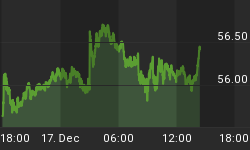Economic Snapshot
Yesterday, Fed minutes show that Fed Chair Janet Yellen is on a mission to convince the market that a rate hike is on the table for June.
Today, New York Fed president William C. Dudley gave an Economic Press Briefing on the state of the U.S. economy.
Let's take a look at the briefing and the "Economic Snapshot" data the Fed presented.
Dudley Comments
When asked about the trajectory for the monetary policy stance, I always point out that it is data dependent.
While market analysts readily have access to economic and financial data, this access is not widely available to everyone. To help fill this information gap, for the past year we have been making available on our website a monthly publication called U.S. Economy in a Snapshot. This publication contains a set of key data charts as well as commentary by our staff economists. The purpose is to provide interested readers easy access to clear and concise presentations of important economic information. The associated commentary provides some pertinent observations one might draw from the data.
Our goal is to provide information that helps households and businesses follow the data along with the Fed. If people know more about how the economy is performing and how that is likely to influence our actions, this should make it easier for us to achieve our twin objectives.
U.S. Economy in a Snapshot Overview
- Real consumer spending was flat in March and its growth slowed further during the first quarter of 2016. However, April light-weight vehicle sales rebounded from a weak March reading and the April retail sales report was strong.
- Business fixed investment declined for a second consecutive quarter, while there were tentative signs of stabilization in the manufacturing sector.
- The general tone of the housing data in April suggests the sector remained on a very gradual uptrend.
- Payroll growth slowed in April, and the unemployment rate was unchanged. The labor force participation rate and the employment-population ratio both declined. Wage growth remains subdued despite a relatively steady improvement in labor market conditions.
- After some firming in previous months, inflation softened modestly in March, signaling continued slow progress toward the FOMC's longer-term objective. Financial asset price fluctuations generally were fairly subdued. The yen appreciated after the Bank of Japan decided on April 28 to leave its policy stance unchanged.
Little of that signals a need to hike so let's dive into some snapshot details.
GDP Below Potential

Slowdown in Labor Market Improvement

Inflation Softens, Below Fed Objective

GDP Growth 3.9%, 2.0%, 1.4%, 0.5% Last Four Quarters

Manufacturing Hope

Consumer Spending Flat, Income Robust

Retail Sales (Excluding Autos, Gas, Building Materials)

Business Investment Remains Sluggish

Nonresidential Investment Still Falling

Housing Flat

Spending Expectations Decline

Data Dependent? Really?
There are 16 pages of charts in the report. Very little of it remotely suggests a rate hike.
The 10 first charts above are the first 10 charts in the report. The last chart above is the last chart in the report.
I did not have to go out of my way to pick poor charts. The report is primarily poor charts.
Should the Fed Hike?
I do not pretend to know where interest rates should be.
The Fed is even more clueless because they don't know either, but they believe they do.
So, I am not arguing the Fed should not hike. Rather I present the case the Fed has no idea what the hell they are doing.
Serial bubbles of rising amplitude over time is proof enough. The income inequality that has the Fed and Democrats up in arms is a direct result of poor Fed actions coupled with horrendous Congressional actions.
The solution is to get rid of the Fed, get rid Davis Bacon and all the prevailing wage laws, and be thankful that innovation lowers costs of living.
Instead, we have to deal with and listen to a bunch of central planning fools prove they have no idea what they are doing with clueless acts to produce inflation then deal with the consequences when they do.

Related Articles
- New Nothingness: Central Banks are Powerless "They Should Go Away" Steen Jakobsen
- Hello Ben Bernanke, Meet "Stephanie"
- Top 1% Received 121% of Income Gains During the Recovery, Bottom 99% Lose .4%; How, Why, Solutions
- Reader Asks Me to Prove "Inflation Benefits the Wealthy" (At the Expense of Everyone Else)
- Thoughts on the Davis Bacon Act
It's asset deflation not CPI deflation that central banks ought to fear. Even the BIS agrees with that statement. For discussion please see Historical Perspective on CPI Deflations: How Damaging are They?
My January 20, post Deflation Bonanza! (And the Fool's Mission to Stop It) has a good synopsis.
And my Challenge to Keynesians "Prove Rising Prices Provide an Overall Economic Benefit" has gone unanswered.















